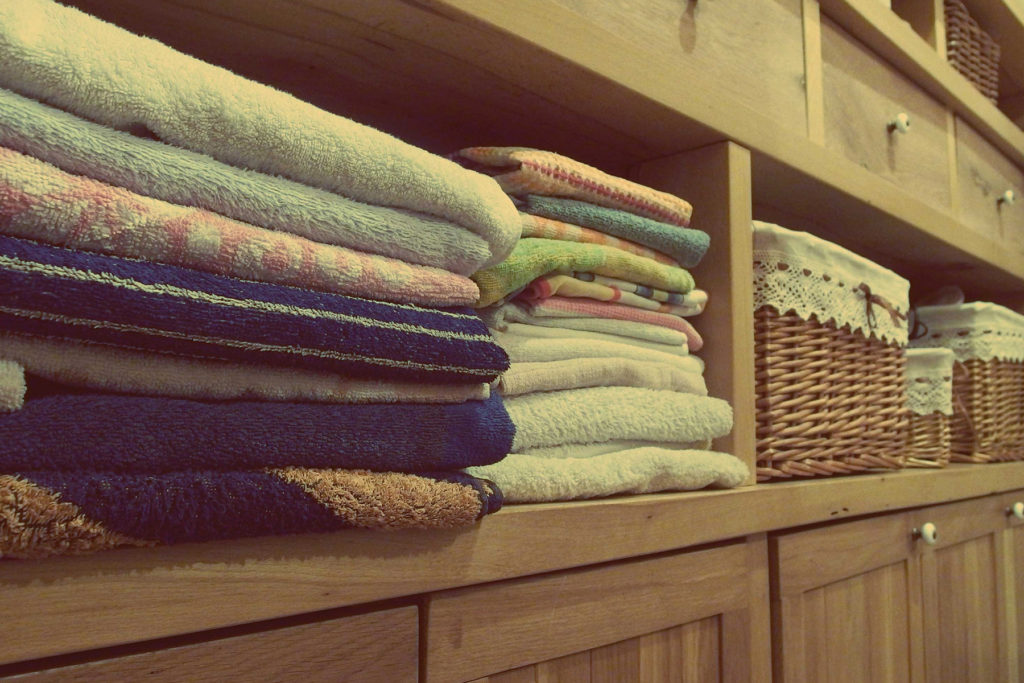The beginning of a new year is an excellent time to make resolutions and change habits. Decluttering is a household task that many people struggle with, and it’s often challenging to know where or how to get started.

How can you begin decluttering to make your house a more pleasant environment? Keep reading to understand the basics of decluttering in the new year.
Divide your Home into Areas
When you realize you need to declutter, you may feel like tackling the whole house in one go. However, you’ll soon find that doing so leads to discouragement. Instead, make a list of the rooms in your home, so you can carefully choose one specific zone to work on.
For example, your home might have the following areas:
- Front Porch
- Entryway
- Kitchen with pantry
- Dining room
- Living room, family room, or den
- Main bathroom
- Laundry room
- Master bedroom, including bath and closet
- Child’s bedroom or guest room
If your house is different, there’s no problem. Customize the list as necessary to fit your reality.
Set a Time – and a Timer for Decluttering
Decide how often you want to declutter in each zone. Some rooms need more frequent maintenance than others. It’s ideal to do a little every day, which will help you form a habit.
Many people find that once they start, it’s difficult to stop. Another common error is taking out more than you can put away in the time available. Doing so can leave you overwhelmed and unmotivated.
Using a timer helps avoid these common mistakes. Choose the amount of time you have to work on decluttering. It could be an hour, 30 minutes, 15, or 10.
Set the timer for the chosen length of time, and work as fast as possible. This strategy can also help you stay focused if you’re easily distracted. When the timer goes off, you’ll need to put everything away, so be careful to take out only the amount you can put away in a short period.
Work on small sections at a time, such as one drawer or one shelf in a closet. Don’t worry about how much you accomplish in the time allotted.
If you try to tackle the entire house at once, it’s unlikely you’ll succeed. However, by consistently working on one area at a time, you’ll see a remarkable transformation over a period of time.
Provide the Necessary Material
You’ll need a few specific tools to stay organized while decluttering. Separate at least three boxes, garbage bags, a dust rag, and a permanent marker.
Use the marker to label one box “Give away,” the second “Throw away,” and the third “Put away.” Use a garbage bag to line the box where you’ll put trash items.
Get Started
When you walk into a room, start with the clutter closest to the door, then work your way around clockwise. Do whatever is next, and avoid skipping spots that seem difficult.
Keep a dust rag in your hand and the boxes at your feet. As you take items out and dust them, put back only those that belong in the room.
Garbage goes in the “Throw away” box and donations in the one labeled “Give away.” If you find things that belong in another part of the house, place them in the “Put away” box.
Choose What to Remove
The greatest challenge while decluttering is deciding what to get rid of. Ask yourself the following questions about each item to help make the process more straightforward:
- Do I love it?
- Have I used it during the last year?
- Do I really need it?
- Do I have another that’s better?
- Should I keep two?
- Does the item have sentimental value that makes me love it?
- Does seeing the object make me feel guilty or sad?

Decluttering has a powerful emotional component. Some people have trouble letting go of items because of unfinished internal business from the past.
Your job while decluttering is to cleanse each area, leaving only the items that make you smile. Give or throw away any that you don’t love (assuming they belong to you). If you find yourself having significant difficulty letting go, consider seeing a psychologist or counselor who can help you identify possible emotional baggage.
Put Objects Where They Belong
As you’re decluttering, a box may fill up before the timer goes off. If this happens, put the items where they go:
“Throw away” box: Take the bag out, close it, and put it in the trash can. Place a new liner in the box and keep decluttering.
“Give away” box: Close and seal the box, and put it in your car, so you can donate it to the local thrift shop the next time you drive by. Avoid saving clutter for a garage or yard sale.
“Put away” box: Move quickly through the house, placing the items in the rooms where they belong. If they already have a place, put them there. If not, leave them in the room that makes the most sense.
Know When to Stop
The timer is your reminder that it’s time to stop. Empty all the boxes, then put them away.
If you’re exceptionally motivated, you may consider setting the timer one more time. Try not to do more than two consecutive sessions to avoid burnout.
Summing It Up
Decluttering may seem overwhelming, but doing a little every day will lead to visible results. Divide your home into areas or zones and decide when to work on each one. Prepare boxes in which you’ll separate items to throw away, give away, or put away.
Use a timer to help keep you focused and avoid burnout. When a box gets full or the timer goes off, put the remaining items away. By repeating this process daily, you’ll be able to create a more peaceful and organized living space.











